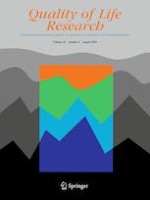Open Access 25-02-2019
Main and interactive effects of inflammation and perceived neighbourhood cohesion on psychological distress: results from a population-based study in the UK
Gepubliceerd in: Quality of Life Research | Uitgave 8/2019
Log in om toegang te krijgenAbstract
Purpose
Low neighbourhood cohesion and increased levels of inflammation are independent predictors of psychological distress. In this study we explored if they also interact to predict it.
Methods
Our sample was 9,393 adult participants of the UK Household Longitudinal Study (UKHLS), a large longitudinal household panel study in the UK. Inflammation was measured using C-reactive protein levels. Perceived neighbourhood cohesion was measured using a 13-item questionnaire. Psychological distress was measured with the General Health Questionnaire-12.
Results
Perceived neighbourhood cohesion and inflammation retained their significant main effects on psychological distress even after adjustment for confounders (age, gender, ethnicity, partner status, education, smoking status, obesity and urbanicity). The effect of neighbourhood cohesion was larger. However, we did not find evidence for an interactive association between the two.
Conclusions
Perceived neighbourhood cohesion was inversely related to psychological distress, over and above other important person- and neighbourhood-level characteristics. Inflammation was also associated with psychological distress, albeit less strongly. If these associations are causal, they suggest that promoting neighbourhood cohesion can alleviate some of the burden associated with psychological distress.
